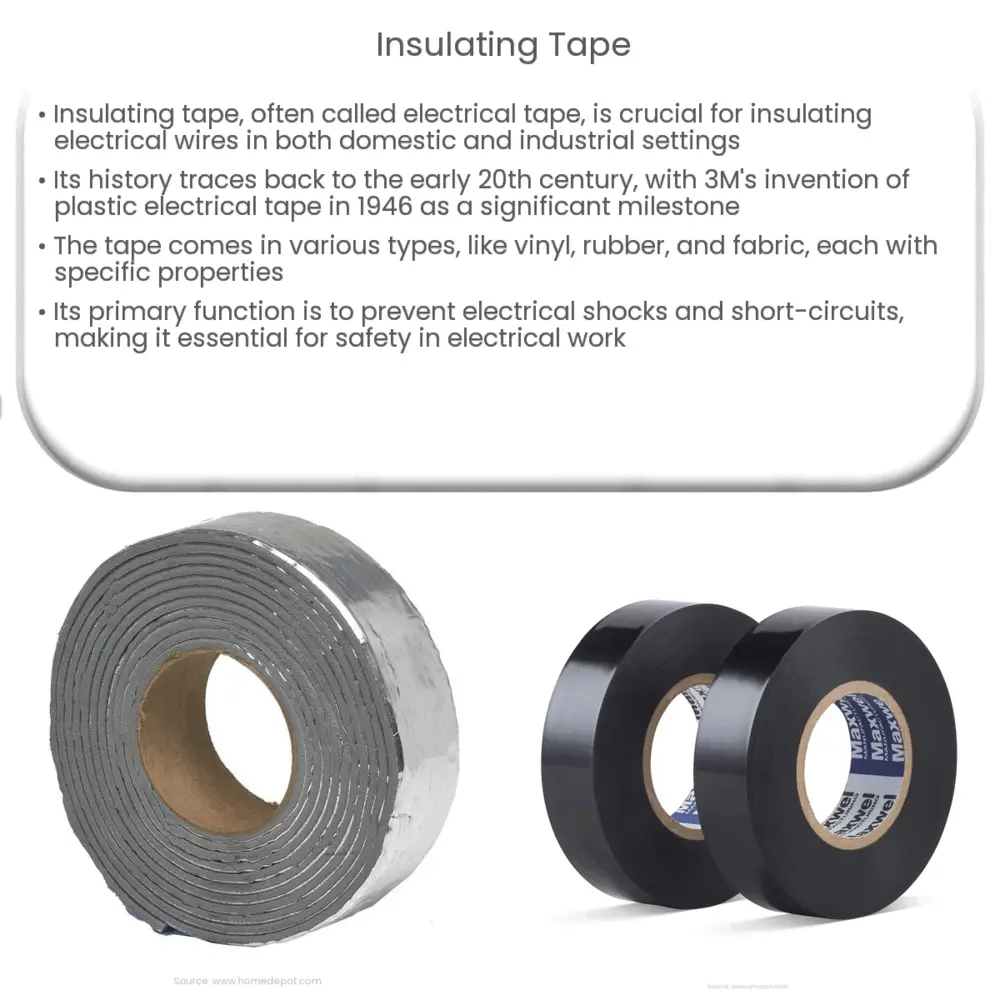Explore the history, types, uses, and future of insulating tape in our comprehensive guide. Prioritize safety with the right tape!

Insulating Tape: An Overview
Insulating tape, commonly known as electrical tape, is a pressure-sensitive tape that is used to insulate electrical wires and other materials that conduct electricity. A product of the modern age, it has become indispensable in both domestic and industrial applications.
The History of Insulating Tape
The development of insulating tape can be traced back to the early 20th century. Initially, friction tape, which was adhesive on both sides, was used for insulating purposes. It was, however, messy and left a sticky residue behind. This problem gave birth to the invention of plastic electrical tape in 1946, by the company 3M. Their product, called “Scotch” tape, was a game-changer in the electrical industry.
Composition and Types
-
Vinyl Insulating Tape: This is the most common type of insulating tape. It has excellent resistance to abrasion, moisture, alkalies, acid, copper corrosion, and varying weather conditions.
-
Rubber Insulating Tape: Also known as “self-amalgamating” or “fusing” tape, it’s made from either silicone or ethylene propylene rubber and adheres only to itself. It’s commonly used in high voltage applications for its superior insulating properties.
-
Fabric Insulating Tape: This tape, often coated with rubber or plastic, offers good mechanical protection but inferior electrical insulation compared to other types. It’s typically used for temporary fixes or for bundling wires together.
Usage of Insulating Tape
The primary function of insulating tape is to prevent electrical currents from short-circuiting or causing an electrical shock. By covering exposed wires with insulating tape, the risk of accidental electrical contact is significantly reduced. Whether in a professional setting or for minor home repairs, insulating tape serves a crucial safety purpose.
Insulating Tape Quality Standards
For a product so critical to safety, quality is paramount. To ensure this, several standards like the IEC 60454 (by the International Electrotechnical Commission) and UL 510 (by Underwriters Laboratories) have been developed. These standards specify the required physical and electrical properties for insulating tapes to ensure optimal performance and safety.
As we move forward, the importance of insulating tape in the electrical industry and everyday life continues to grow. It has not only revolutionized safety measures in electrical work, but also the very way we handle and perceive electricity.
The Future of Insulating Tape
As the world becomes increasingly dependent on electricity, the demand for high-quality insulating tape is predicted to increase. Advancements in manufacturing technology, coupled with ongoing research and development, promise exciting innovations. Today, we’re seeing the emergence of insulating tapes with superior thermal properties, increased adherence, and improved resistance to environmental factors.
-
Thermal Conductive Tapes: These are used in electronic devices to dissipate heat. They improve the longevity and performance of the device, making them a popular choice in the tech industry.
-
Weather-resistant Tapes: Withstanding harsh weather conditions, these tapes offer reliable performance in outdoor settings. This has made them a key component in renewable energy infrastructure, such as wind turbines and solar panels.
Choosing the Right Insulating Tape
When selecting an insulating tape, one should consider the nature of the application, environmental conditions, and the tape’s technical specifications. The thickness of the tape, its dielectric strength (the maximum electric field a material can withstand before it breaks down), and its adhesive properties are key factors to consider. Consulting the relevant quality standards or a professional can guide you in making the right choice.
How to Apply Insulating Tape
Proper application of insulating tape is critical to its effectiveness. Begin by wrapping the tape around the exposed area of the wire, overlapping each layer by at least half the tape’s width. Continue wrapping beyond the exposed area for additional protection. For high-voltage applications, a thicker layer of tape is recommended.
In Conclusion
Insulating tape has become an essential component of modern electrical work, safeguarding users and equipment alike from the hazards of electricity. As technology advances, so do the types and uses of insulating tape, widening its scope and applications. From humble beginnings, it has come a long way, and the future holds even more promise. Despite the growing complexity of electrical systems, the basic principle remains the same – safety first. And in this endeavor, the insulating tape plays a pivotal role.



